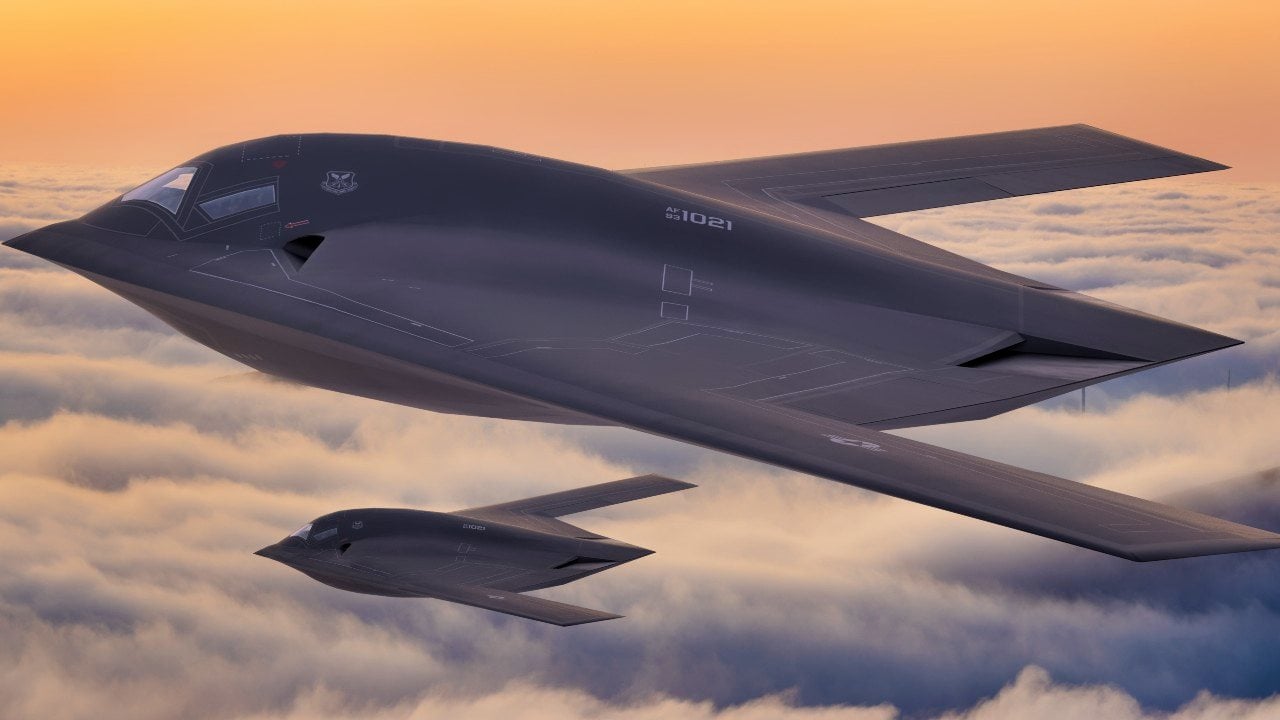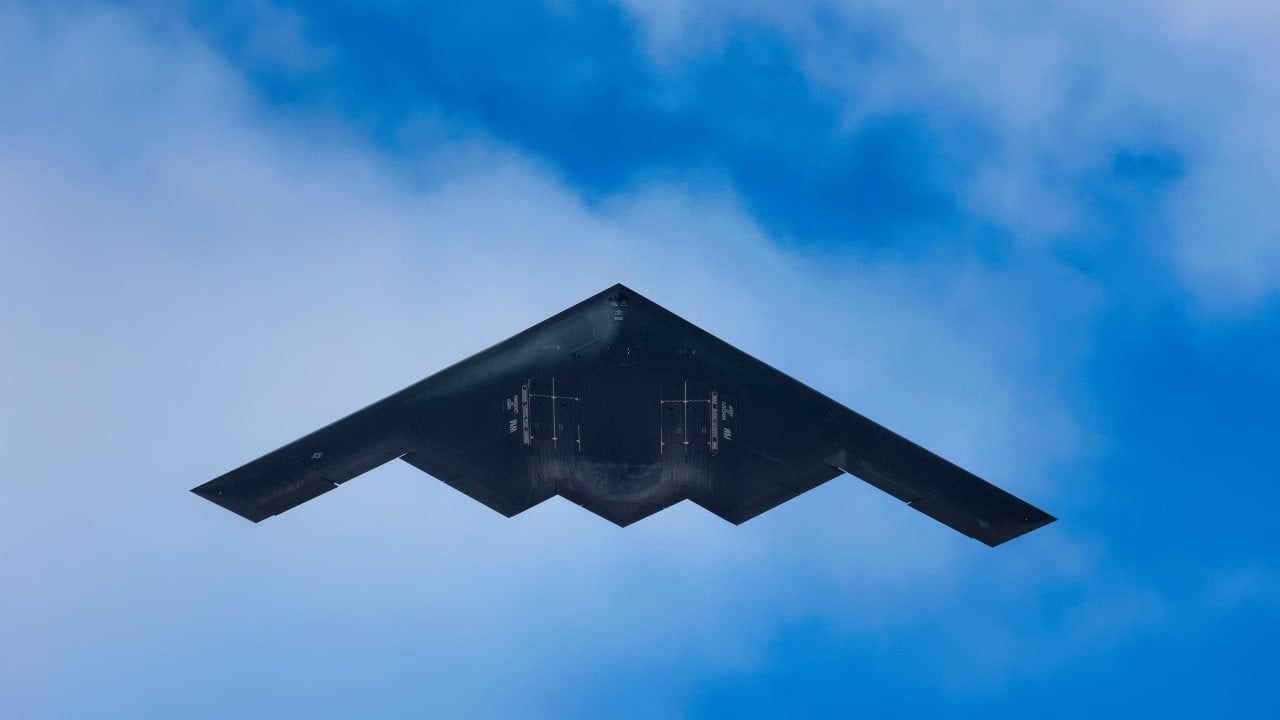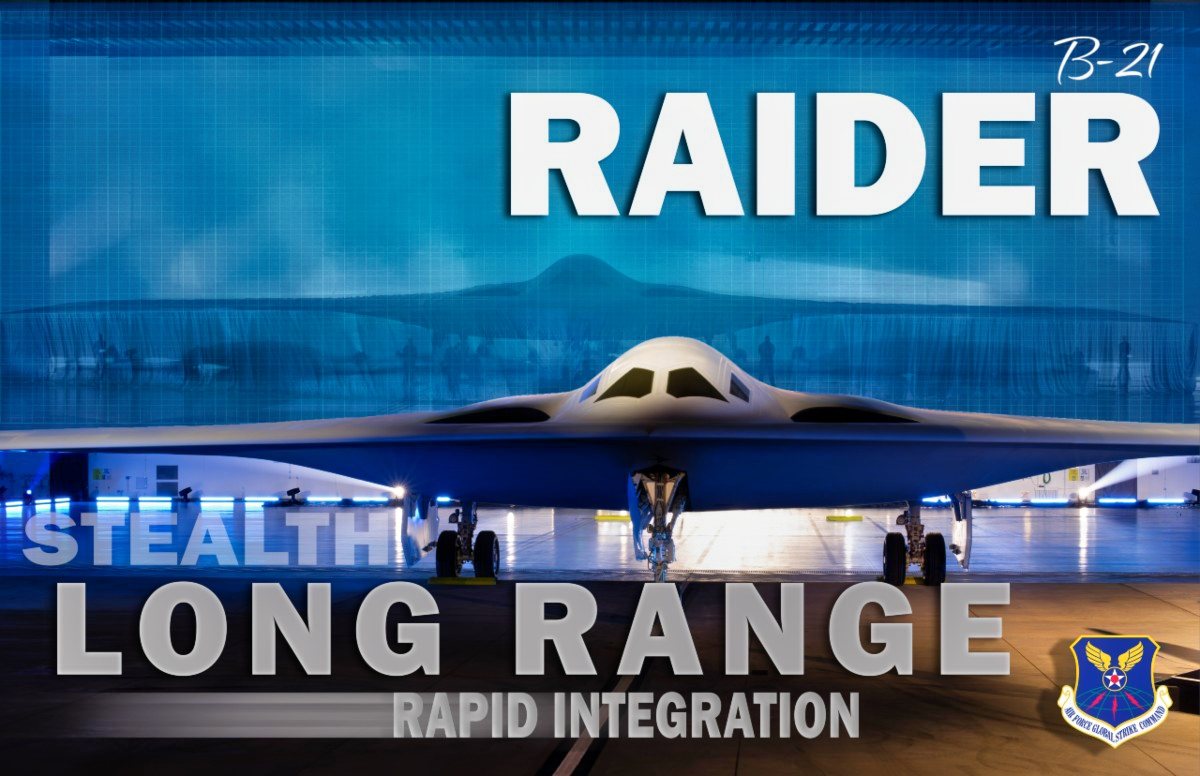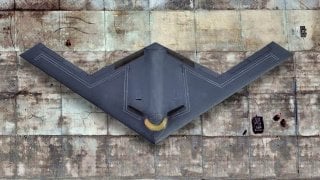Math Might Be the B-21 Raider's Biggest Enemy
The U.S. Air Force’s B-2 Bomber is a crucial asset, capable of penetrating deep into enemy territory with nuclear payloads. However, only 20 B-2s were ever built, leaving a gap in America’s strategic deterrence. The new B-21 "Raider," a more advanced stealth bomber, promises to fill this void, but current budget constraints may limit production to a small number units—far fewer than necessary.
The Problem: The U.S. Air Force’s B-2 Bomber is a crucial asset, capable of penetrating deep into enemy territory with nuclear payloads. However, only 20 B-2s were ever built, leaving a gap in America’s strategic deterrence. The new B-21 "Raider," a more advanced stealth bomber, promises to fill this void, but current budget constraints may limit production to a small number units—far fewer than necessary.

The Solution: With rising threats from China and Russia, the U.S. needs at least 300 B-21s to maintain credible deterrence and project power globally. Failing to do so may undermine America’s defense strategy and provoke future conflicts.
The B-21 Math Problem, Explained
The B-2 Bomber is the only bomber in the US Air Force’s inventory that is capable of penetrating deep into an enemy’s territory, delivering a nuclear payload, and surviving. Its stealth technology has made it a prized asset in the US military’s arsenal. Yet, there are only about 20 of these beauties. Having first entered service in 1997, even as enemy anti-aircraft/area-denial (A2/AD) capabilities have become significant threats to America’s ability to project power globally, the United States Congress has not authorized anymore to be built.
This means that the B-2s are far too valuable to risk in any large numbers. Despite the advantages its stealth technology gives, nations like China and Russia have steadily developed increasingly sophisticated ways to detect and threaten the safety of US stealth planes—notably older models, such as the B-2.

For the B-2 to be a reliable strategic asset in today’s highly contested world order, the Pentagon needed significantly more units than a mere 20. Today, there is a newer, more advanced, stealth plane on the rise: the B-21 “Raider.” This warplane is like the B-2, only better. Yet, there is a debate raging in defense circles as to how many the Pentagon could afford and reliably build, given its budgetary constraints and its other commitments.
Basically, the Pentagon is doing to the B-21 what it did to the B-2 for the last 30 years: short-changing it. Therefore, Washington’s bureaucracy is undercutting America’s strategic advantages.
The US Defense Budget: Constrained, Drained, and Broken
Even though the US defense budget is just a couple hundred billion shy of $1 trillion, the US military is more constrained than it has ever been. At a time when the United States is more threatened by near-peer rivals than it has been in decades. Weapons systems like the B-21 “Raider” are essential for the US military, if it is to maintain its deterrence against enemies like China and rivals, like Russia.
Part of the problem is that the costs for the weapons systems that the Pentagon needs to maintain credible deterrence are onerous on the taxpayer. Having fallen behind China and Russia in key new defense technologies, like lasers or hypersonic weapons, the ability for America to threaten its rivals falls on existing technologies, like the B-21. But the B-21, despite being easier and cheaper to build than an entirely new technology, remains an expensive system.
And that’s why the Pentagon is receiving pushback on its request for a large number B-21s. They’ll be lucky at this point if they can get 20. These are insufficient numbers to maintain credible deterrence. If either China or Russia no longer believe America’s deterrence is reliable, they will seek to exponentially expand their challenge to the United States. It will provoke the very war that America’s strategy of deterrence and denial has been designed to prevent.

Like the B-2, the B-21 is one of America’s only surefire ways that it can threaten targets belonging to China, Russia, Iran, or North Korea, that are hardened by A2/AD defenses as never before. America allowed for the impressive B-2 bomber to languish in its arsenal for decades by only building a handful of these marvels. The B-21 is more relevant today than the B-2 will ever be. What’s more, B-21 is one of the few systems that can actually wreak havoc on enemy countries, if—and when—the next great power war erupts.
America's Defenses are In a Bad Place
The Pentagon must be given the funds it needs to build at least 300 B-21s—and it must be done quickly before the next great power war commences (even if it means cutting other programs that the Air Force favors to meet this increased demand for the B-21).
Author Experience and Expertise: Brandon J. Weichert
Brandon J. Weichert, a National Interest national security analyst, is a former Congressional staffer and geopolitical analyst who is a contributor at The Washington Times, the Asia Times, and The-Pipeline. He is the author of Winning Space: How America Remains a Superpower, Biohacked: China’s Race to Control Life, and The Shadow War: Iran’s Quest for Supremacy. His next book, A Disaster of Our Own Making: How the West Lost Ukraine, is due October 22 from Encounter Books. Weichert can be followed via Twitter @WeTheBrandon.
All images are Creative Commons or Shutterstock.
From the Vault
Russia Freaked Out: Why the U.S. Navy 'Unretired' the Iowa-Class Battleships
Battleship vs. Battlecruiser: Iowa-Class vs. Russia's Kirov-Class (Who Wins?)


